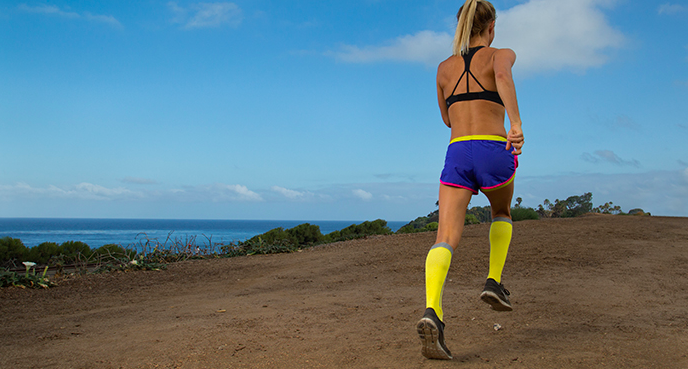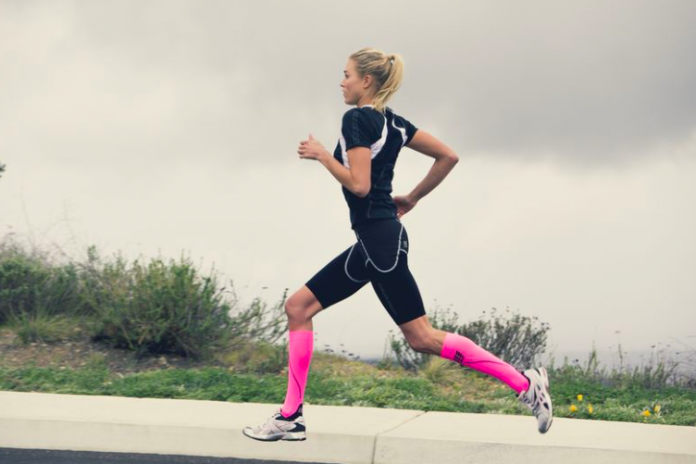Compression garments are the latest trend in the world of running. It is said that compression helps in 2 areas – performance and recovery.
The Science – What Does Compression Gear Do?
Clinically, compressions are designed to deliver specific pressure to the designated limb. These pressure levels are designed to enhance blood flow and hold your muscles together.
Performance
Use of compression gear may reduce the vibration of muscles. The reduction of muscle oscillations is believed to optimize the contraction direction of muscles fibers, resulting in improved mechanical efficiency. Improved efficiency means being able to run further and longer with less energy and hence leading to improved performance.
A reduction in vibrations also means your muscles suffer less trauma which results in less fatigue. This reduction in fatigue level over the course of an endurance event will lead to an improved effect on performance.
Recovery
 Photo Credits: Prime Compression
Photo Credits: Prime Compression
Compressions are also used by many athletes for recovery purposes. The pressure applied to muscles is believed to increase blood circulation and reduce the lactic acid build-up and encourage lactic-acid breakdown. The effects allow for you to recover faster from fatigue and muscle soreness.
Find The Right Fit
With compressions, it is important to find the right fit – too loose and you lose the beneficial effects of compression gear; too tight and your muscles feel like they are suffocating. Here are some tips on how to find the right fit for you:
- Compression gear should be tight enough for you to notice a grip on your muscles, but not too tight as to cut off circulation and cause numbness.
- Always refer to sizing charts. Measure the circumference of your calves and check your size before buying calf compressions.
- Choose compressions made from breathable material. Remember that with running, always make sure you are comfortable in your gear.


